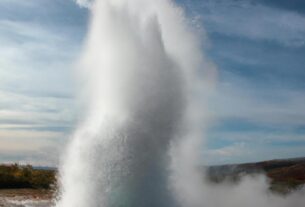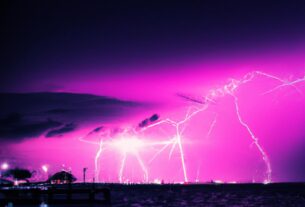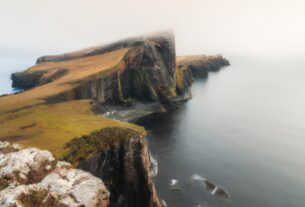Did you know that migrating crabs embark on epic journeys across oceans and land in search of food, breeding grounds, or better living conditions? This natural phenomenon has captivated scientists and nature enthusiasts for centuries. In this article, we will delve into the world of migrating crabs, exploring the different types of crabs that migrate, the reasons behind their migrations, the challenges they face, their migration patterns, and the conservation efforts made to protect them.
Types of Migrating Crabs
There are several types of crabs that migrate across land and sea. These include the horseshoe crab, red crab, and coconut crab. The horseshoe crab, one of the oldest living creatures, is famous for its annual migration in the Delaware Bay in the Mid-Atlantic region of the United States. The red crab, also known as the Christmas Island crab, migrates in millions to Christmas Island, Australia, to breed and lay eggs. On the other hand, the coconut crab, the largest land-dwelling arthropod, migrates to the ocean to spawn.
While some crabs migrate from land to water, others move from one location to another on land. For instance, the fiddler crab migrates to escape predators or find better feeding grounds in the intertidal zones of the Atlantic and Pacific coasts.
Understanding the different types of migrating crabs is crucial for developing effective conservation strategies to protect their habitats and ecosystems.
Reasons Why Crabs Migrate
Crabs migrate for various reasons, including environmental factors, breeding patterns, and food availability. Environmental factors such as temperature, salinity, and oxygen levels can trigger migration in some species. For example, horseshoe crabs migrate to the Delaware Bay to breed in spring when the water temperature rises.
Breeding and spawning patterns also play a significant role in driving crab migration. Male crabs migrate to breeding grounds to find mates, while female crabs move to suitable locations to lay their eggs. For instance, the red crab migrates to Christmas Island to breed and lay eggs.
Food availability is another critical factor that influences crab migration. Crabs migrate to find better feeding grounds or escape from food scarcity. The coconut crab, for example, migrates to the ocean to feed on carrion and decaying matter.
Understanding the reasons behind crab migration is essential in developing effective conservation strategies to protect their habitats and ecosystems.
Challenges Faced by Migrating Crabs
Migrating crabs encounter numerous challenges during their journeys, including natural predators and human activities that affect their migration patterns. These challenges can significantly impact crab populations and, if not addressed, can lead to the extinction of entire species.
Natural Predators
Natural predators pose a significant challenge to migrating crabs. Throughout their journeys, crabs encounter a range of predators, including birds, fish, and mammals. For example, the red crab’s migration on Christmas Island is fraught with danger as numerous predatory animals hunt them, including birds, rats, and lizards.
Crabs have developed various defense mechanisms to overcome this challenge. They employ camouflage and burrowing tactics for protection. For instance, the fiddler crab burrows into the mud to evade predators, while the horseshoe crab relies on its hard shell for defense.
Human Activities that Affect Migration
Human activities such as habitat destruction, pollution, and climate change also pose significant challenges to migrating crabs. Urbanization and land development lead to habitat destruction, which destroys the key areas that crabs rely on for breeding and feeding. Pollution, including water contamination and reduced oxygen levels, can be fatal to crabs.
Climate change is another significant challenge that affects crab migration patterns. Rising sea levels, increasing water temperatures, and changing ocean currents can alter the habitats where crabs live, breed, and feed. For example, the horseshoe crab’s migration patterns have been affected by climate change, as warmer waters disrupt their breeding grounds.
In conclusion, the challenges faced by migrating crabs call for urgent conservation efforts to protect these remarkable creatures and their habitats. Preserving their breeding and feeding grounds, reducing pollution, and controlling overfishing are vital steps towards their preservation. Together, we can ensure that future generations can marvel at the natural beauty and diversity of migrating crabs.
Migration Patterns of Crabs
Migrating crabs follow seasonal migration patterns dictated by environmental factors such as temperature and food availability. For instance, horseshoe crabs migrate to the Delaware Bay in the spring when the water temperature rises and the crabs move to their breeding grounds. Similarly, red crabs migrate from the deep sea to the shore in search of cooler waters during the summer months.
Different crab species migrate to specific geographical locations, depending on their breeding and feeding requirements. For example, the coconut crab migrates from the forest to the ocean to spawn, while the horseshoe crab migrates along the Atlantic coast of North America.
Understanding the migration patterns of crabs is crucial in developing effective conservation strategies to protect their habitats and ecosystems.
Conservation Efforts for Migrating Crabs
Conservation efforts are instrumental in protecting migrating crabs and their habitats. These efforts include preserving breeding and feeding grounds, reducing pollution, and controlling overfishing.
Preserving breeding and feeding grounds ensures that migrating crabs have suitable habitats for breeding and feeding. For example, the Delaware Bay, where horseshoe crabs migrate to breed, has been designated a protected area to minimize human interference with the breeding process.
Reducing pollution is another critical conservation effort. Plastic waste and oil spills can contaminate the water and harm crab populations. Plastic pollution, in particular, has threatened the red crab migration on Christmas Island, affecting their breeding and feeding grounds.
Controlling overfishing is essential to protect migrating crabs. Overfishing can reduce food availability and deplete crab populations. For example, the fiddler crab population in some areas has been threatened by overfishing, resulting in a decline in their food sources.
Conservation initiatives involve the establishment of protected areas, the implementation of sustainable fishing practices, and educating the public about the importance of these efforts.
In conclusion, conservation efforts are crucial for protecting migrating crabs and preserving their habitats and ecosystems. TooLacks encourages everyone to support these efforts and work together towards a better future for these remarkable creatures.
To learn more about TooLacks, click here.


